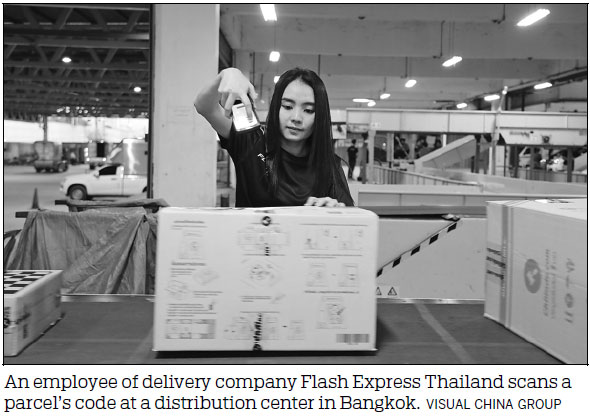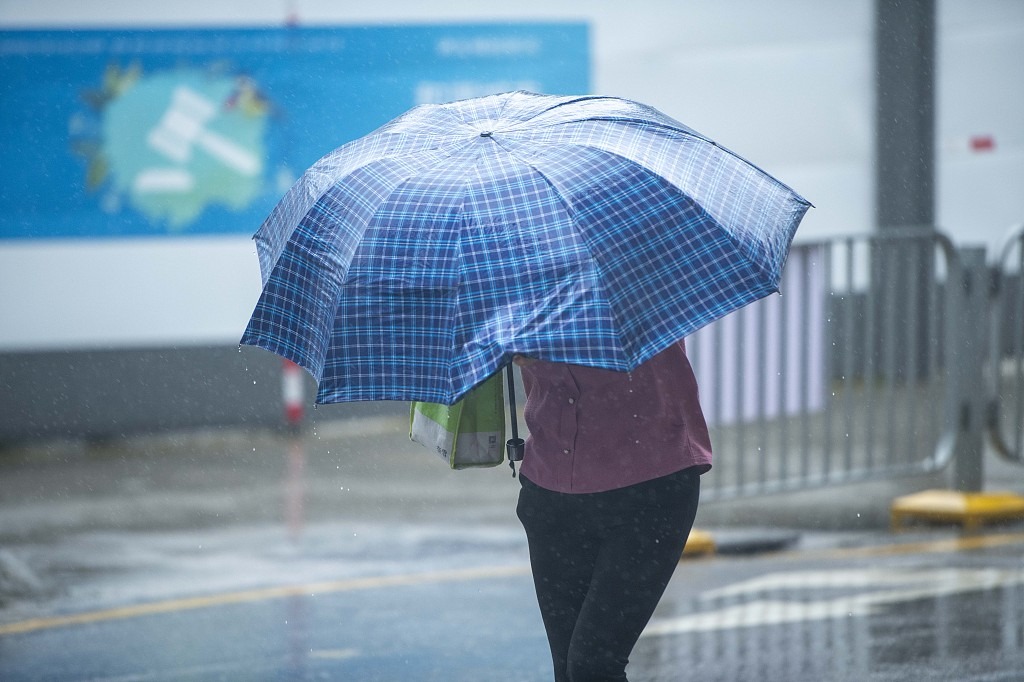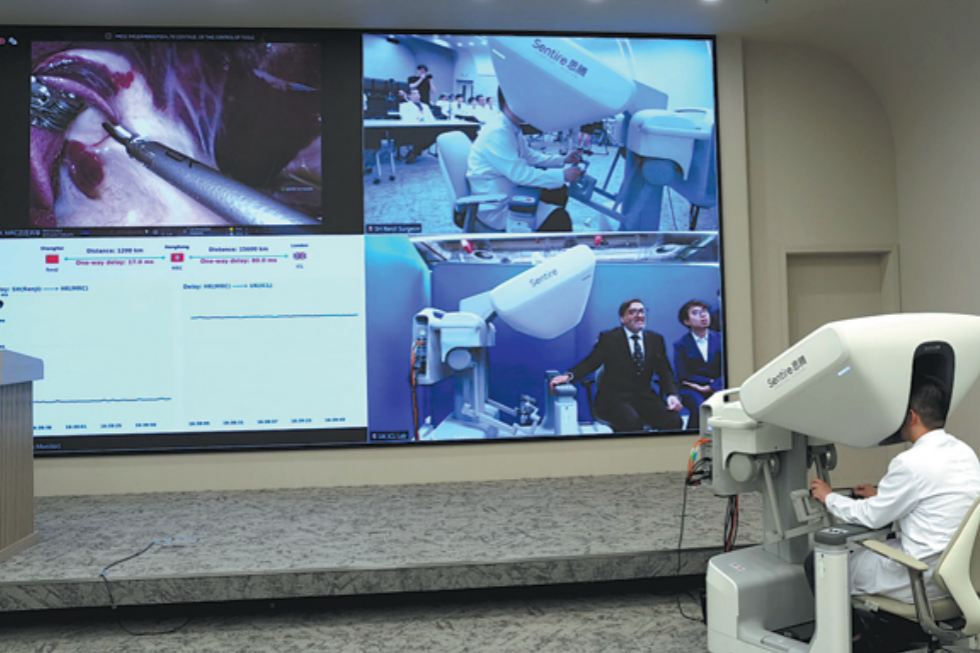SE Asia follows China trend to buy online
Pandemic lockdowns force consumers to embrace convenience of web-based grocery delivery, Yang Han reports

To Kathie Ting Zhi Ying, 21, a health science student at UCSI University in Kuala Lumpur, online grocery services have been a lifeline during Malaysia's "movement control order (MOC)".
In an effort to contain the COVID-19 outbreak, Malaysia has implemented different phases of MOC since March 18. Various restrictions were introduced, including the closure of schools and nonessential businesses. Residents were also asked to stay at home.
"When the pandemic started and we couldn't go home, (the university) said it is better that we don't go out and stay in the school," said Ting. After being recommended different online grocery platforms by the university and her friends, Ting, a new user, placed her first order.
"(The online grocery) is quite convenient," said Ting. Even though ordering online means she cannot see the quality of the goods until they arrive, the fast and convenient delivery satisfies her.
The pandemic has accelerated the growth of Southeast Asia's internet economy, which is on track to exceed $300 billion in 2025.
More than one in three digital services consumers started using the services because of COVID-19. Groceries, together with education and lending, have seen the biggest jumps, according to a report released in November by Bain and Company. It was produced in collaboration with Google and Temasek, Singapore's sovereign fund.
The rising demand has triggered a service expansion of many market players in the region.
Ride-hailing company Grab launched an on-demand daily necessities delivery service, GrabMart, to support people during the pandemic. In June, the company said the service expanded from two to eight countries in Southeast Asia over just three months. On Dec 2, it also introduced GrabSupermarket, its first delivery-only supermarket in the region.
When Singapore raised its Disease Outbreak Response System Condition to the second-highest level on Friday, Feb 7, regional e-commerce platform Lazada's grocery arm RedMart saw a threefold rise in the average number of weekly orders by that weekend.
As for Indonesia, management consultancy RedSeer said it expects the archipelago's e-grocery market to grow five to six times in 2020.
Guillem Segarra, CEO of online grocery platform HappyFresh, said the growth rate his company has experienced is unprecedented. Between March and May, the company saw a huge increase in traffic and inflow of new customers. "We saw a traffic increase of five to 10 times (compared with the same time a year ago)," he said.
Based in Indonesia, HappyFresh also operates in Malaysia and Thailand. During the first half of 2020, the company reported a net profit in Indonesia, its largest market. Segarra told China Daily he did not expect the break-even to take place so soon. His previous forecast was to become profitable by the end of 2021.
Segarra said the surging demand was driven not only by new customers, but by repeat users.
"The retention rates (on HappyFresh) today are the highest that we've ever seen," he said. He noted that the platform's sales reached an all-time high in November though the COVID-19 situation has eased in many countries.
Consumers have shifted from panic buying to something resembling normal weekly shopping, said Segarra. Many people have formed a habit of buying groceries from online platforms during the lockdowns, he noted. The company is also going to launch a loyalty program in January to retain customers.
In Malaysia, homegrown company MyGroser said the pandemic has "forced it to grow and expand a lot faster than expected". In a matter of hours, the demand for grocery delivery locally grew by over 1,000 percent, said the company's founder and CEO Stephen Francis.
"We had only launched earlier this year (2020) and were still learning when the overwhelming demand came in during the first few months of the pandemic," Francis told China Daily.
"While we initially couldn't handle all the incoming orders, we took up the challenge and worked to grow our capacity 10-fold during that period," said Francis. He said the company also expanded its delivery fleet and enhanced handling standards to ensure products' security.
Apart from online grocery service providers, Richard Skinner, retail and consumer leader of auditing and consultancy firm PwC Singapore, said there was a lot of partnership between delivery operators and grocery providers to "satisfy the sudden peak in demand that the supermarkets were unable to serve immediately" during the initial stages of the COVID-19 outbreak.
"In Singapore, we see more players investing into this space," Skinner told China Daily.
For traditional grocery providers, Skinner said while they have control over inventory and sourcing, they need to deal with high expenditure from warehouses.
On the flip side, "the pros of being an enabler include the ability to leverage synergies with existing business to lower additional cost. But cons could include a lack of control over the quality of inventory sourced and potential stockouts," said Skinner.
Seeing continued growth in Southeast Asia's online grocery sector, Skinner said there will be challenges.
"Delivery-in particular last-mile logistics-is actually quite expensive and consumers don't always want to pay for that," said Skinner. In addition, many large market players also have legacy costs in the form of bricks-and-mortar stores.
Francis from MyGroser said that as lockdowns limited movement, delivering fresh produce to consumers became more challenging.
In addition, the pandemic has resulted in severe shortages on imported products as it has disrupted the global supply chain, said Francis.
Segarra from HappyFresh said the online grocery business is a difficult one to build, adding that not all players in the market have the capability to ensure fresh and quality grocery delivery.
Segarra said the surging demand has allowed the company to scale up much faster. In terms of expansion, he sees attractive market prospects in regional markets like the Philippines and Vietnam.
'Tipping point'
Segarra said many e-commerce trends, including online grocery, in Southeast Asia resemble those that have been seen in China to an extent.
"The e-grocery penetration (rate) in China 10 years ago was probably below 1 percent. Before COVID-19, it was 7-8 percent and probably now it has accelerated up to 15 percent," said Segarra. "E-grocery in Southeast Asia is definitely in its tipping point that was what China saw almost back in 2015-17."
As China emerges from lockdown restrictions, 56 percent of Chinese consumers are buying food and groceries online more frequently than before, according to data and analytics company GlobalData.
Admitting it will be difficult for HappyFresh to enter the Chinese market, Segarra said there will be a lot to learn from its Chinese peers."I think (when looking at) China, it is almost like looking at the future and seeing how this going to develop. We can learn a lot from that."
"Demand for grocery delivery will continue because people now see how convenient it is but perhaps with a slower rate of growth," said Skinner from PwC.
With more players joining the bandwagon, Francis from MyGroser said this will help educate consumers in the region and help keep things competitive.
"In time, consumers will decide for themselves which services are best suited to their needs," said Francis.
"I do not think that the pandemic has changed the future (of online groceries)," said Segarra from HappyFresh. "What the pandemic (has done) is that it has definitely accelerated the massive adoption of digital services, especially in the grocery space. The numbers are telling us that this change in adoption and customer behavior is here to stay."
To Malaysian university student Ting, this is undoubtedly true. Having enjoyed the convenience of online groceries, she said she will continue to use the services after the pandemic.
"I've already got used to (having) these (groceries) delivered to my door, so I don't really feel like going out very far to buy groceries," said Ting."It is really convenient that if you are busy or if you don't want to get stuck in traffic or go out."



Today's Top News
- EU's sanctioning of Chinese financial institutions unjustifiable
- China coastal regions brace for Typhoon Wipha
- Premier stresses high-quality implementation of major national projects
- Syrian interim govt begins phased implementation of ceasefire in Sweida
- Mayors from around the world gather in Qingdao for dialogue
- Premier announces construction of Yarlung Zangbo hydropower project






























